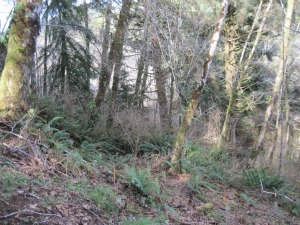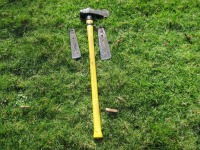Wood Splitter use
on your Fire Wood so it will Fit in your Wood Stove

Wood splitter
use on your fire wood to split the blocks into smaller pieces so it will fit into your stove.
You have used your chainsaw to saw blocks off of the logs that you fell.
These blocks are too big to fit into your stove so you are faced with the chore of having to make them smaller.
The species of wood will determine just how hard they are to split.
The oaks are normally difficult.
A lot of the hardwoods are fairly easy to split.
You can use an axe to split these blocks but it isn't a very efficient method.
It takes a lot of effort and if you are not careful you will end up breaking the handle on the axe.

Now that you have the blocks cut off the log it its time to split them if they are too large to fit into your stove, easily.
There are different ways to approach this task.
You can spend either sweat and effort or money.
The more money you spend, usually the less sweat and effort is required.
A cheaper way to go, but with more effort and sweat is the:
Manual Wood Splitter
This consists of a maul, a tool that is similar to an axe but bulkier and heavier.
This splitter is designed for the task of splitting the blocks of wood into smaller pieces.
This is the tool to use and if used properly it will withstand the abuse.
The maul does come in different weights from 6lbs up to 12lbs.
This does not sound like much weight but after using one of these for a period of time it will get heavy.
I like the 6lb one.
I can handle this easily and normally it only takes one or two swings to split the wood.
It is a matter of the effort to lift the heavier weight up over your head compared to the number of times you will have to do this.
It makes sense that a heavier maul will strike the wood with more force, but it will take more effort to get it over your head.
Often when you look at a blocks face there will be a crack.
I try to strike the face of the block in line with the crack.
Try and put the larger diameter of the block down on the ground.
This is the direction that the log faced the stump.
This will often make the block split easier.
If your wood is difficult to split you can use a steel wedge to get the task done.
You simply drive the wedge into the face of the block.
Use the flat side of the splitting maul for this chore. If the block is large in diameter it works better to have two wedges. One inserted a few inches from the side and when drove in a distance another wedge can be driven into the opposite side. This will usually make something positive happen.
Word of caution though.
Always wear some sort of eye protection.
These are steel wedges and parts of them can chip off and fly off hitting you.
If the head of the wedge does get to look like a mushroom it is time to drag out the grinder and grind until the head is back to looking like new.When using wedges try to keep in mind that if the block doesn't split open you are going to have to remove them.
This can be accomplished by leaving a couple inches of the wedge exposed and then knocking it back and forth with your splitting maul.When and if you come upon a block that has a lot of bigger knots there is something you can do to make the splitting easier.
Set the block on end with the end with the knots facing up.
Take your chainsaw and cut into the block until you have cut below the knot area. Then you can take the wood splitter and give it a good whack and usually this will split it open. If this doesn't do the trick, then take a wedge and drive it down into the chainsaw cut.So now you are an expert on the operation of the wood splitter and have found out just how much effort and sweat it requires to split your wood.
Perhaps now you are thinking it is time to spend some money and save on the effort and sweat. If this is the case then it is time to be moving up one notch to the power wood splitter. Check out this page for information on this: power woodsplitterNow that you have learned the type of equipment that you require to complete this task, I invite you to go to these sites to get the needed information on these tools:
From wood splitter to fire wood
From wood splitter to forestry gardening tips
Click here to read our privacy policy: Privacy Policy





